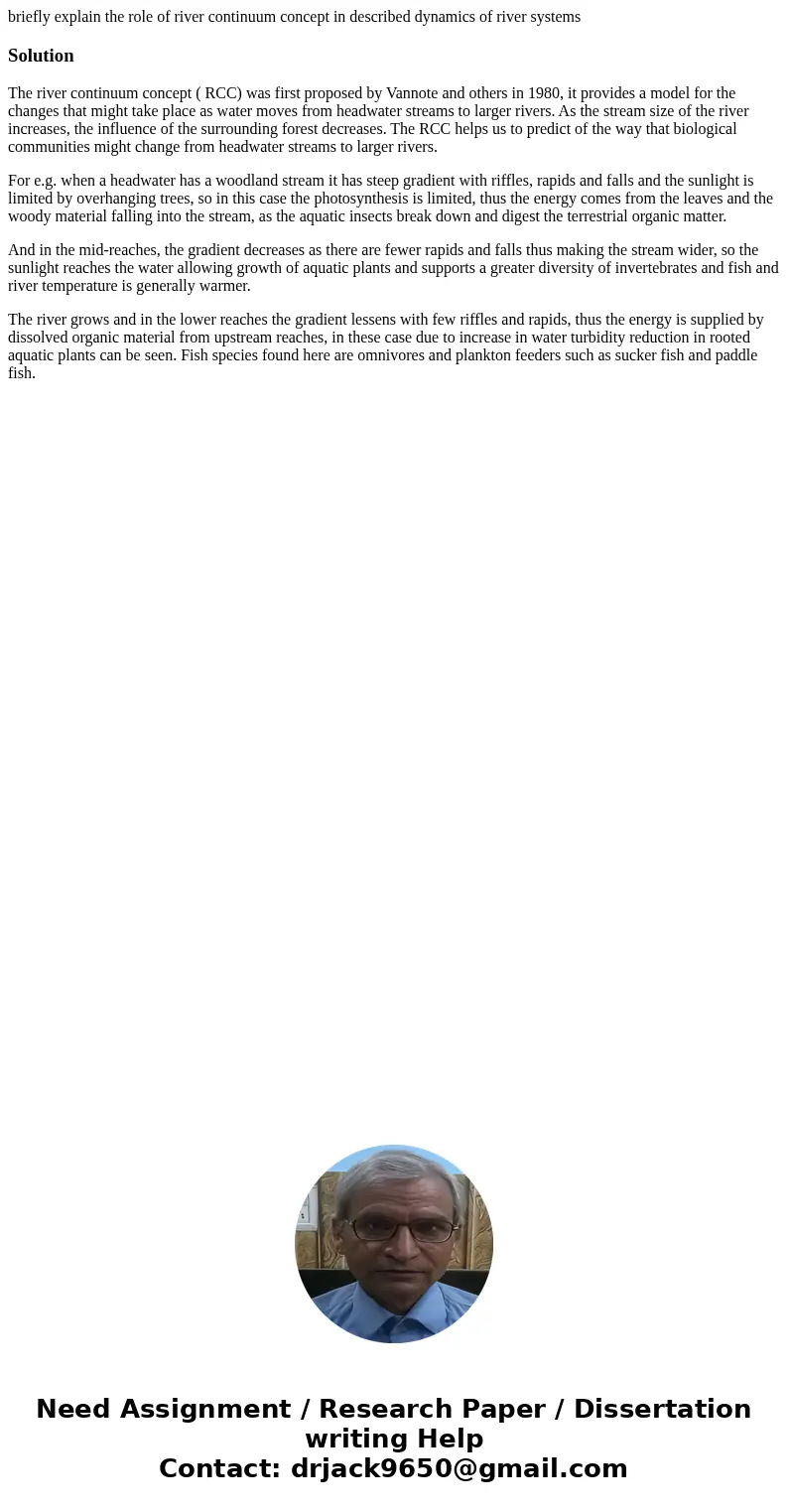briefly explain the role of river continuum concept in descr
briefly explain the role of river continuum concept in described dynamics of river systems
Solution
The river continuum concept ( RCC) was first proposed by Vannote and others in 1980, it provides a model for the changes that might take place as water moves from headwater streams to larger rivers. As the stream size of the river increases, the influence of the surrounding forest decreases. The RCC helps us to predict of the way that biological communities might change from headwater streams to larger rivers.
For e.g. when a headwater has a woodland stream it has steep gradient with riffles, rapids and falls and the sunlight is limited by overhanging trees, so in this case the photosynthesis is limited, thus the energy comes from the leaves and the woody material falling into the stream, as the aquatic insects break down and digest the terrestrial organic matter.
And in the mid-reaches, the gradient decreases as there are fewer rapids and falls thus making the stream wider, so the sunlight reaches the water allowing growth of aquatic plants and supports a greater diversity of invertebrates and fish and river temperature is generally warmer.
The river grows and in the lower reaches the gradient lessens with few riffles and rapids, thus the energy is supplied by dissolved organic material from upstream reaches, in these case due to increase in water turbidity reduction in rooted aquatic plants can be seen. Fish species found here are omnivores and plankton feeders such as sucker fish and paddle fish.

 Homework Sourse
Homework Sourse